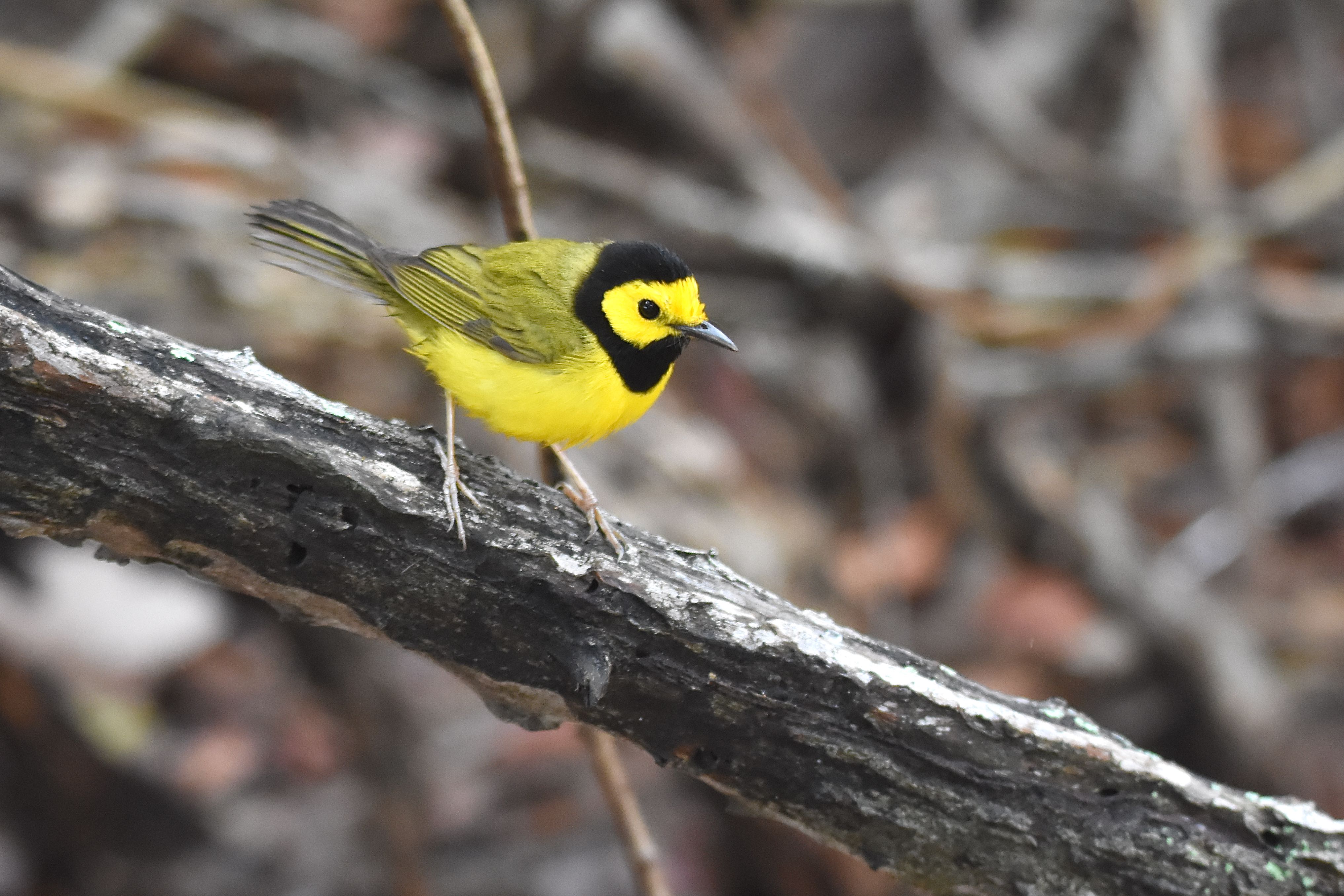
Hooded warbler, photographed at Garden Key, Dry Tortugas National Park, Monroe County, in April 2017.
Of all various the warblers that either pass through Florida or call it home for a portion of the year, this guy has to be among the easiest to identify and among easiest to figure out how it got its name: hooded warbler, Setophaga citrina.
Also, the hooded warbler doesn't make seasonal changes in appearance; what you see in January is what you'll see in July. Like most warblers, however, females are less distinctly marked than their male counterparts.
In most of Florida, hooded warblers are seen only during spring and fall migrations — rarely they'll spend winter in the southern part of the state. But they do regularly summer over in the forested swamps of extreme northern Florida, from Duval County westward to Escambia. Their breeding grounds stretch over most of eastern United States and into southern Canada.
In winter, they'll fly south to the Caribbean, Mexico and Central America. One odd thing about their wintering habits: both males and females are territorial and will defend their turf against intruders of the same species. Most other birds tend to become more social or at least ease up on their territorial desires in winter. Males and females also take to different habitats, males mature tropical forests, females in scrubby or secondary forested areas. They're generally seen migrating mid-March to mid-April and again in September and October.
They're small birds, about four-and-a-half inches long. Males have a black "cap" that wraps around a bright yellow face and into the throat like a hooded sweatshirt. The chest and belly are bright yellow, the legs pink, the back and wings are olive with black stripes. The tail has white in the outer feathers that's exposed when flicked.
Females and immature males are olive above and yellow below, and lack the distinctive hood. Some females might have the outline of a hood.
Bugs make up the hooded warbler diet — caterpillars, moths, spiders, grasshoppers and beetles are on the menu. They'll glean prey off tree leaves or pick it from the ground; occasionally they'll fly out to grab a bite to eat, literally. Males will return to the same nesting territory year after year; females, however, will pick a different spot. The song of the hooded warbler is individually distinctive, and males are able to learn and memorize the songs of their neighbors, apparently as a means of keeping turf disputes to a minimum.
In summer, hooded warblers nest close to the ground in mature forests with dense understories. Females weave cuplike nests out of grasses, spider silk, dead leaves and similar material. Clutches are generally four eggs (three in Florida), which take about 12 days to hatch, with females almost always doing the sitting. The Florida Fish and Wildlife Conservation Commission says mom and dad split sitting duties. The young can leave the nest after eight or nine days and can fly two or three days later. Mom and dad will split the brood, each continuing to care for their charges for five more weeks.
Generally hooded warblers have one brood per season, but can have a second. Hooded warbler populations have been on the upswing in most of its range but brown-headed cowbirds, the bad parents of the avian world, pose a threat in some places.
Hooded warblers are members of Parulidae, the warbler family.
Garden Key, Dry Tortugas National Park



